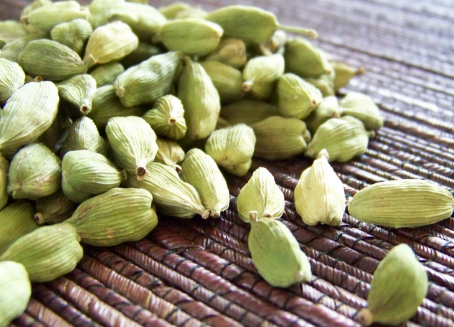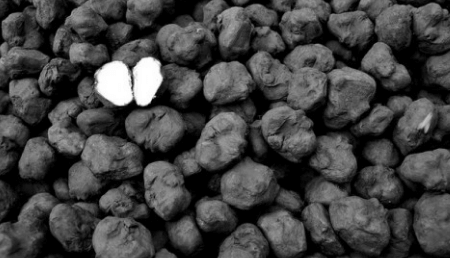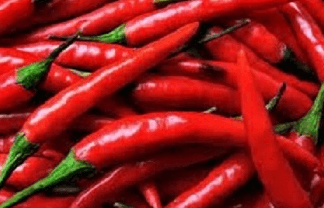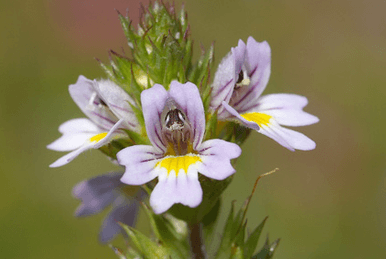Haritaki, हरीतकी/ हरड़ Medicinal Benefits
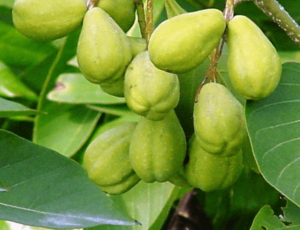
Botanical Name-Terminalia chebula
Common Name-Harad
Family-Combretaceae (Haritaki Kul)
Habit-Tree (60-80 ft. in height)
Properties
Property-Lightness, Dryness
Taste-Five tastes (except salt, mainly fragrant)
Potency-Heating
Metabolic Property-Sweet
Specific Property
- Tridoshar
- Stomachic
- Intellect promoting
- Rejuvenating
Part Used-Fruit

Description-It is called as haritaki because it carries away all diseases or it is sacred to Siva (Hara). Haritaki has several interesting synonyms, portraying its various peculiarities like pathya-since it removes obstructions from the pathways and channels of the body, abhaya-as it promotes fearlessness, amrta-an ambrosia, divya-a divine herb, rnedhya-nervine tonic, pranada-life saving, jivaniya-vitalizing herb, vayahstha-one which promotes longevity and maintains youth, rasayana phala-a rejuvenating fruit etc.
Haritaki enjoys the prime place among medicinal herbs in India since ancient times. Vagbhata has praised it to be the drug of choice in the therapy of vata-kapha diseases and one of its famous preparations-Triphala as the best panacea for ophthalmic diseases and wounds and ulcers. It is mentioned as anulomana-laxative and rejuvenative to purisavaha srotasa excretory system. (Sarngadhara Samhita).Susruta has cited it as stanyasodhana lactodepurant. Recana-a purgative and vimlapana anti-inflammatory.
Maharsi Caraka, the great sage, has catogorised haritaki as arsoghna-anti-haemorrhoidal, virecanopaga-adjunct to purgation, praja sthapana-promotes longevity, rasayana-a rejuvenative, kasahara-anti-tussive, kusthaghna-anti dermatosis, jvarahara-antipyretic and hikka nigrah. ana-anti-hiccup.
Haritaki tree is found in the sub Himalayan tracks from Ravi to West Bengal, Assam and in all deciduous forests ofIndia, specifically in Madhya Pradesh, Bihar, Assam and Maharashtra. It is found growing at an altitude of 1800 meters in height and 1.5-2.5 meter in diameter. The tree is rounded, crowned with spreading branches. The leaves 10-20 cm long, ovate, acute, in almost opposite pairs. There are two small glands near leaf-base. Flowers dull white in spikes at the ends of branches. The fruits are hard, 2-4 cm long, with 5 ribs on its body, yellowish green in colour. The seeds single, light yellow, non-adherent to the pulp of the fruit.
The botanical name of haritaki is Terminalia chebula and it belongs to family Combretaceae. Myrobalans contain astringent principles—tannin (tannic acid) 45% and a large amount of gallic acid, mucilage, a brownish yellow colouring matter chebulinic acid which when heated in water, splits up into tannic and gallic acids. Chebulin, from flowers, a purgative glycoside of a anthraquinone derivative is isolated. Tannin, terchebin is isolated from fruits. From fruit kernels, palmitic, stearic, oleic, linoleic, arachidic and behenic acids are isolated. The fruits contain about 30% astringent substances-chebulinic acid, tannic acid, gallic acid and chebulagic acid etc. Along with resin and a purgative principle, sennoside is also present. Chebulin from flowers; a purgative glycoside of an anthraquinone derivative isolated; tannin-terchebin from fruits. Palmitic, stearic, oleic, linoleic, arachidic and behenic acids isolated from fruit kernels.
Haritaki is sweet, sour, pungent, bitter and astringent in taste, sweet in the post digestive effect and has hot potency. It does not contain salty taste i.e. lavana rasa, hence known as alavana and has predominance of astringent taste. By the combination of sweet + sour tastes, it alleviates vata dosa, pungent, bitter tastes, it alleviates kappa dosa and astringent, sweet, it alleviates the pitta dosa. It has special potency (prabhava), to alleviate all the three dosas. It possesses light and dry attributes. It has laxative, rejuvenative, purgative, astringent and dry properties. It is valuable in number of diseases.
The fruits of haritaki are used for medicinal purpose. It is used both, internally as well as externally. Externally, the paste applied effectively reduces the swelling, hastens the healing and cleanses the wounds and ulcers. The paste is applied on the eyelids in conjunctivitis for relier. The gargles with its decoction bestow excellent results in stomatitis and diseases of the throat. The decoction or its cream is salutary in cleansing the chronic wounds and from better healing, respectively. Triphala, one of its famous preparations, can be used externally for hair wash, for brushing the teeth in pyorrhea or bleeding gums and its decoction for washing the chronic, non-healing wounds and ulcers.
Internally, haritaki is used in a vast range of diseases. The usage of haritaki is recommended in kapha diseases with rock salt, in pitta diseases with sugar and in vata diseases with the ghee. There is a specific mention of the anupana (substance that serves as a medium for the herbs to be taken with) with which karitaki should be combined, with reference to the season. In varsa ritu (July-August), it should be taken with rock salt, in sarad ritu (September-October) with sugar, in hemanta ritu (November-December) with sunthi, in sisira ritu (Janaury-February) with pippali, in vasanta rtu (March-April) with honey and in grisma ritu (May-June) with jaggery. Says Vag-bhata, when haritaki powder fried in ghee regularly consumed, with sufficient ghee in food, promotes longevity and boosts energy.
There are three varieties of haritaki fruits, as per their stages, available in the market, namely, balaharitaki-raw fruit, chambhari or rangari haritaki-half ripened fruit and survari-fully ripened fruit. Ayurvedic pharmacognosy has described 7 varietyes of haritaki fruits viz.vijaya, rohini, putana, amrta, abhaya, jivanti and cetaki.
Common gastrointestinal ailments, tumours, ascites, piles, enlargement of liver-spleen, worms, colitis respond very well with haritaki. In gout its powder works well with jaggery. Its combination with sunthi powder is given with hot water to alleviate asthma and hiccup. Hyperacidity is curbed with haritaki powder, black raisins and sugar. For purgation, triphala powder is recommended with water. The mixture of triphala powder and haridra is a well known adjunct in diabetes. Bronchospasm is mitigated effectively, with the combination of haritaki and bibhitaka powders, with honey. In abdominal pain due to flatulence, it is given with jaggery and ghee. Diseases of the eye, like conjunctivitis respond well when eye wash of triphala decoction is given, with internal medicament of triphala powder with ghee and honey. The most popular combination of haritaki, musta, sunthi and jaggery is an effective panacea for diarrhea, dysentery, flatulence etc. Haritaki siddha ghrta is beneficial in chronic fever. The decoction of haritaki or triphala is given alongwith honey in hepatitis, with great bebefit. Haritaki pooder with honey and ghee is an effective remedy for anaemia. In oozing skin lesions haritaki is salubrious. In obesity, its decoction with -honey reduces the excessive body fats. Haritaki is beneficial for the eyes; it improves memory and is salutary in dysuria and urinary stones. Haritaki is one of the best rejuvenatives.
Dosage- 3-6 gms.
Uses
- In loss of appetite, indigestion-Haritaki taken regularly with Sunthi promotes digestive powder.
- As Rasayana-Two Haritaki fruits taken with jaggery, honey, Sunthi, Pippali and salt (according to season) provide happiness and longevity.
- In Grahani rog (Sprue)-The bark of Haritaki tree taken with butter milk alleviated grahani roga.
- Haritaki taken after meals checks excessive salivation.
- In piles-Haritaki mixed with jiggery should be taken followed by intake of buttermilk.
- in Dandruff- Powder of Mango seeds and Haritaki is equal quantity are pounded with milk and applied.

